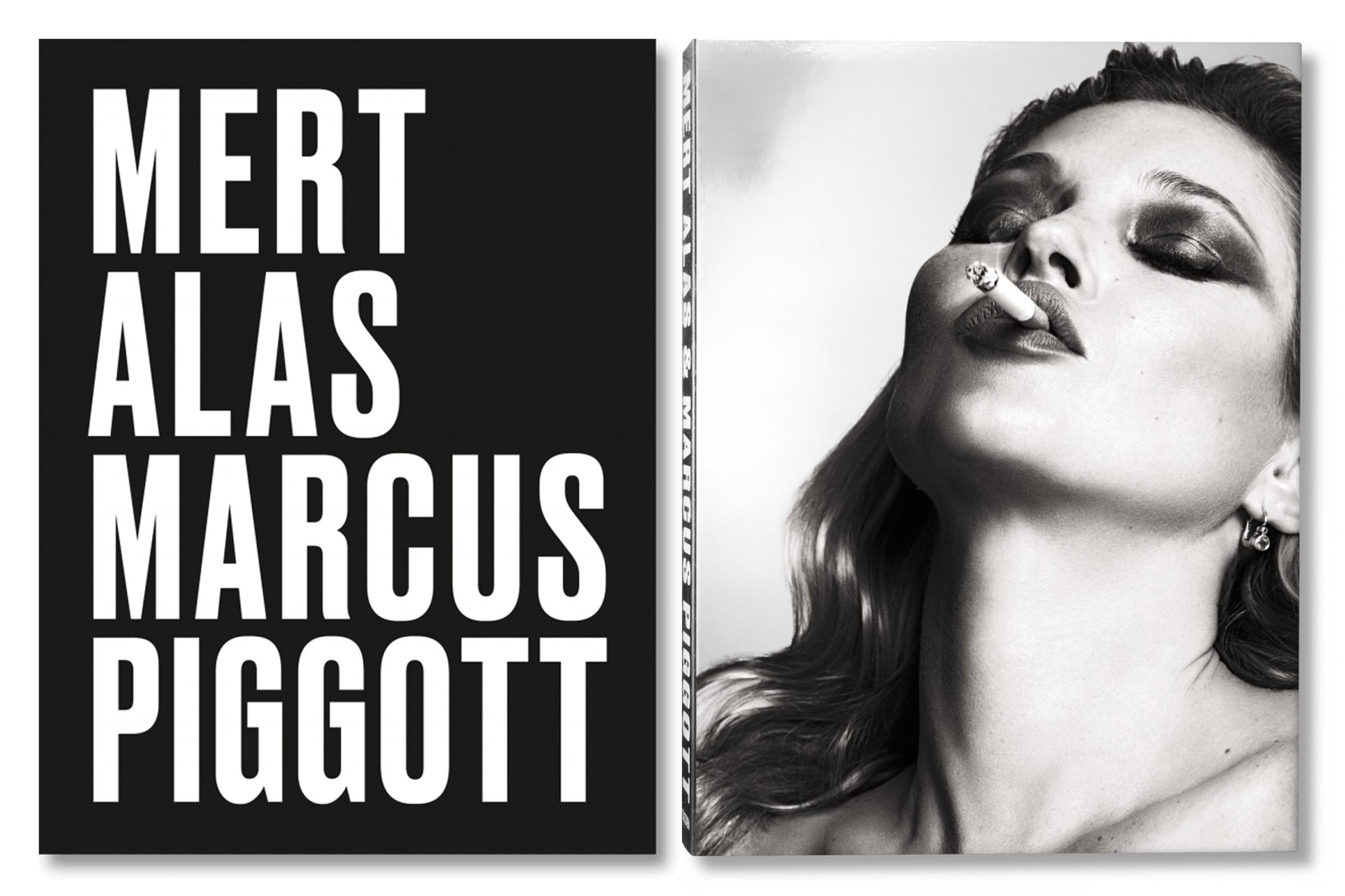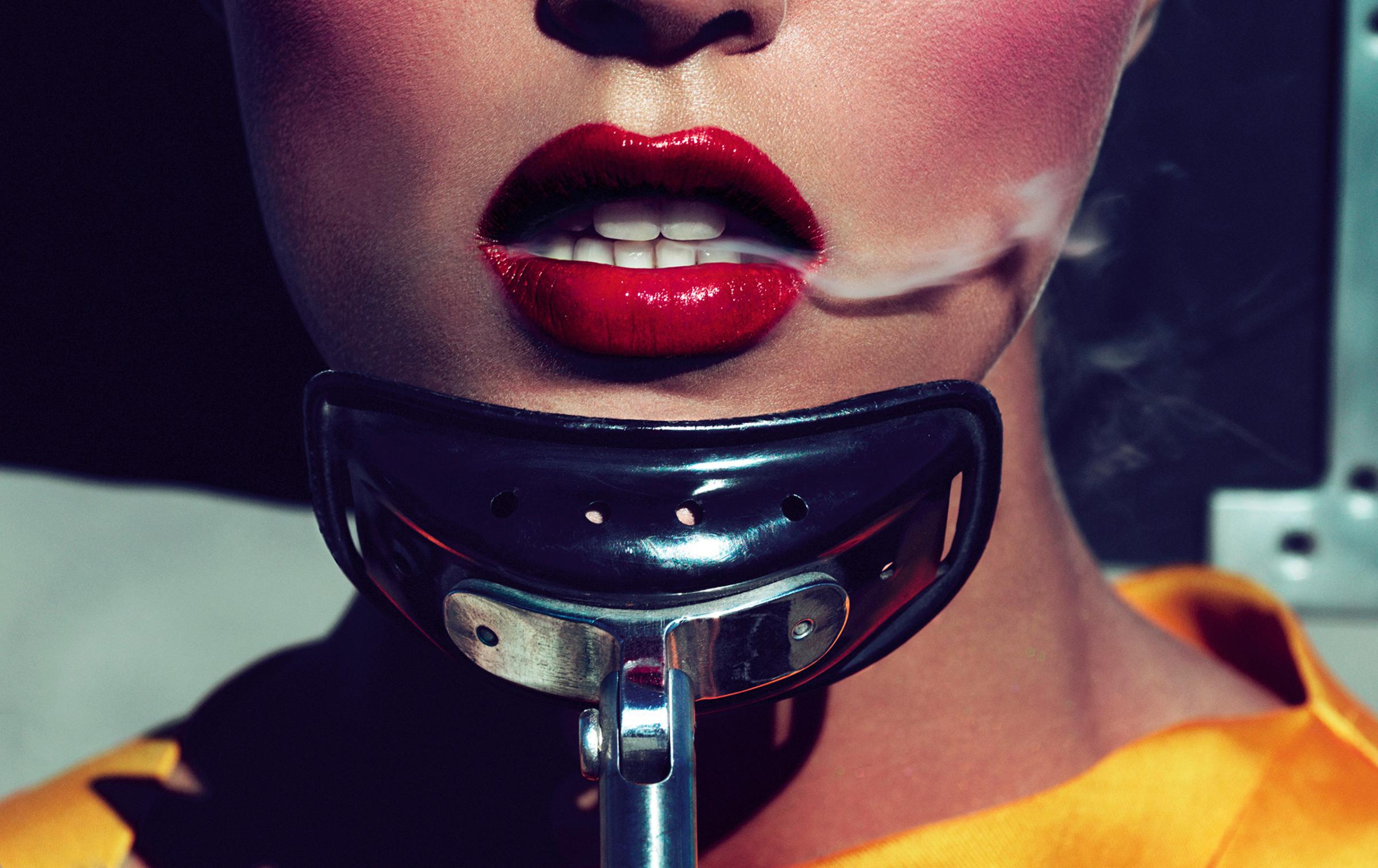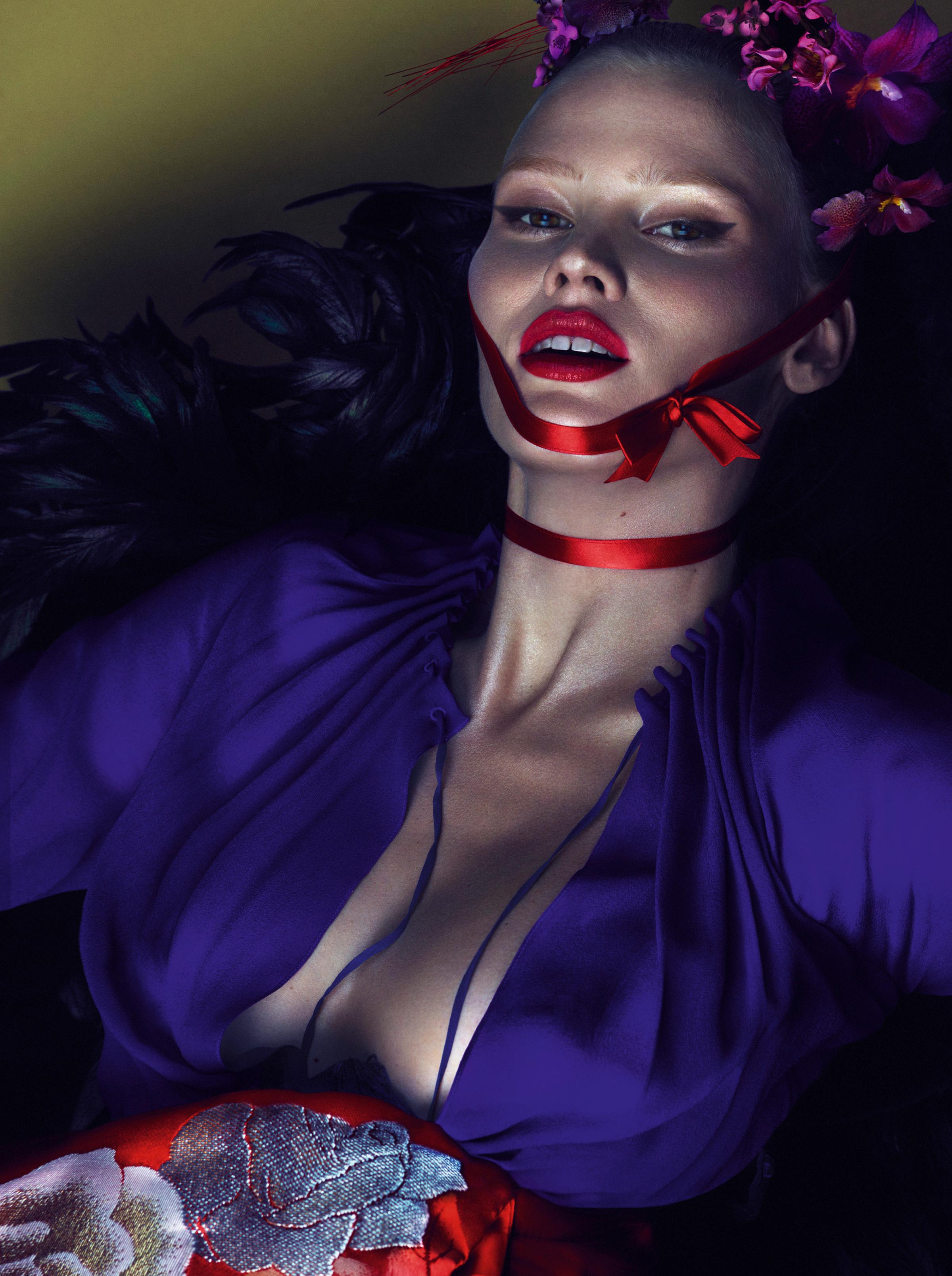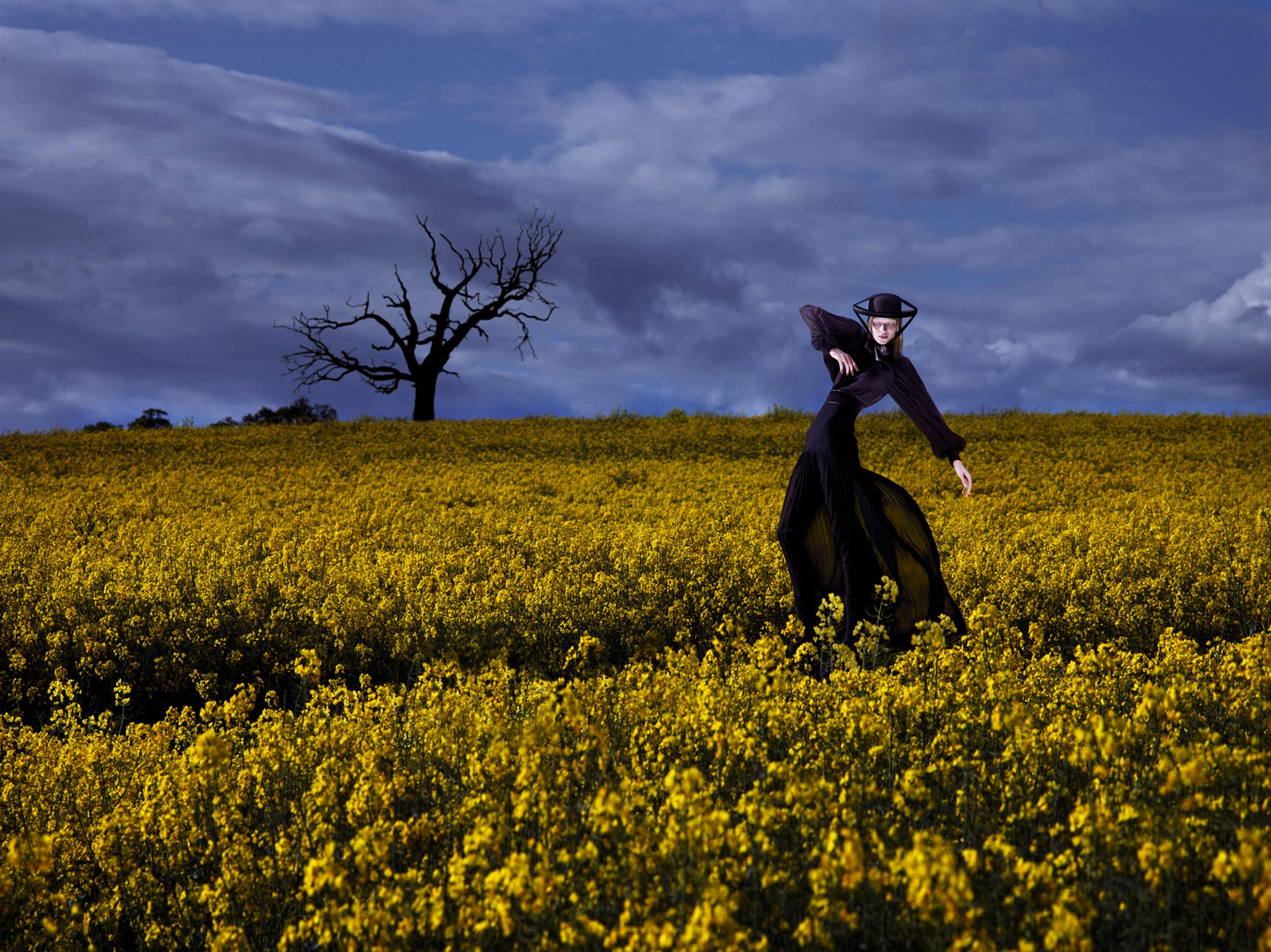
Since meeting at a party in the early ’90s, photographers Mert Alas and Marcus Piggott (or Mert & Marcus as they’re better known to most of the world) have been a joint creative force to reckon with. In the two decades since the pair started collaborating from a DIY East London loft-turned-studio, they’ve brought an element of highly-stylized glamour to the fashion world.
The pair are known for their polished, hyper-saturated images and unapologetic use of digital manipulation, creating fantasies in picture form in projects that run the gamut from Kate Moss’ high-fashion, 60th anniversary Playboy cover to the edgy album art for Taylor Swift’s highly-anticipated upcoming album, Reputation. Now, with 20 years in the industry to their credit, Mert and Marcus are looking back at their work with their first retrospective book, a limited-edition, 400-page glossy tome from Taschen titled simply, Mert Alas and Marcus Piggott.
We spoke to the photographers about their two decades in fashion, Instagram, and what Taylor Swift’s new album sounds like. See some of their most iconic images from the book above.
When did you two first start creating images?
Mert Alas: Twenty years ago. In 1994, we met and started sort of making pictures and then from 1995, we were doing photos of ourselves and our friends at home, nothing to do with fashion, just a lot of portraits and nudes, and then in 1997, we started doing this.
Marcus Piggott: We’d call up friends at night and be like, ‘come over,’ we were always excited about doing something. I had studied [photography] for about 10 years before that anyways, so we were always taking pictures. We met and we started working together.
Do you both shoot and edit?
Mert: We give birth to the idea together, we shoot together, we’ll swap the camera because we only have one camera on-set. So he might say, ‘give me the camera, I have some angle here that I’d like to try’ and vice-versa. And then we will edit together and we have a team of artists, digital artists and printers that we work with. We go over all the details ourselves.
Do you only shoot digital?
Marcus: Well, we do now. You know, never say never because film is so great, but after years in the darkroom, printing, digital just gives you so much freedom.
Mert: It’s fast.
Marcus: You’re not chasing the Polaroid, you know? You’re not trying recreate something over and over again.
What would you say is more important to you two as image makers in your style, the editing of the photo or the shot itself?
Mert: The shot, always the shot! Sometimes we have an idea, and the idea is a dream, it’s the middle of the night, there’s a moon, there’s a wolf, so we paint that idea onto a photograph by shooting different elements and putting them together, and finessing it. I always prefer getting the shot, of course, as a photographer, but I also love making something out of nothing. Putting elements together and creating an image.

You were on the forefront of digitally altering images to make them fantastical. What inspired you to create really stylized, staged photos?
Marcus: Well, as much as they are staged, they’re really quite loose as well.
Mert: It was not really a plan, we would do a photograph and then it would be like, “Oh my god, maybe the sky should be like this.” It was kind of following our fantasies and dreams a little bit, falling into that, not being concerned with the reality, you know? We are artists, we’re not journalists, so we’re meant to be selling dreams. For us, it was like, “Let’s make the sky red! Let’s make her eyes bigger.” There were details that you could change and in the end, it isn’t so fake that people think, “Oh my god, this is like a drawing,” it’s in the borderline, so you feel like it’s a dream. Our photography has a dream-like sense: how can we portray dark dreams in a beautiful way, in beautiful packaging? So you look at it, you like it, there’s some darkness in it. It’s a camouflage of our dark side.
How did you two meet and how did you start collaborating creatively together?
Mert: We met at a party in England. We became very close, very quickly, we had a very interesting bond when it came to art, creativity, music, and fun.
Marcus: In our home, there was always an element of playing or fun or cameras, but then we kind of fell into it and gave it our life and our passion. We gave a lot of our life, really. Most of the 2000s, we spent at home, making photos. It was our passion together.
You two were on the same page for that.
Mert: Same page, but at the same time, very different people. Most of our greatest photos are the result of a giant fight that we probably had. That’s the way it worked and still does. We just had a fight ten minutes ago [laughs].
Marcus: I think it’s important not to just be satisfied, that you’re willing to keep pushing.
Mert: In this world, people surround you, especially when they work for you, and everything you do is “great.” And you can easily fall into that “greatness” if you were alone. But we never had that! It was always, “it can be better” or “it’s not working” or “the light is sh-t,” so there was always a little dissatisfaction in what we were doing and at the same time, trying to impress each other.
Marcus: And, you know, it’s someone where you value their opinion. Pushes you along.
Mert: We both do some personal work ourselves, even though before I would show it to anyone, I would show it to Marcus. It’s almost like our inner voice, outside of us.
How do you stay inspired after 20 years in the business?
Mert: It’s very hard, but what drives us is the force and love of life. We’re both very into life, love, fun, friendship, culture. Anything and anyone who’s got anything to say, a dancer, a singer, a painter. Or dreams. We both have very vivid dreams.
Marcus: You have to stay inspired, don’t you? We take a nice summer and we take a good Christmas break and that’s good for recharging.
What’s changed about your creative process since you two started taking photos?
Mert: colorThe industry’s changed. Society’s speed of acknowledgment has changed. Everything is available, information is everywhere. You can get something in two hours instead of waiting for a book to come out. Instead of waiting for someone to tell you about something, you can Google it. Because we didn’t have Internet when we started, we didn’t have Instagram, we didn’t have any of that, so everything for us was a fantasy and we weren’t two rich kids where we could buy loads of books, so to learn, we had to go to the library and look at photos and digest them.
I think it’s the inevitability of having so many sources out there; in my opinion, it’s reducing the creative juice of mankind. We stop thinking and asking, “What should be the color? What should be the location? What should be the light?” We are so full of references, we just look and we say “Oh, I should do that hair, that light, that location [claps] — I’m a photographer!” Some good, some bad. I feel lucky to have gone through that process where we actually made it out of nowhere.
I see that both of you are on Instagram, do you feel like that’s something that’s really changed the way we see and consume and create images?
Mert: Why am I on Instagram? I am on Instagram because it’s not something that is serious, it’s not something that relates to my work so much, I post something that I might have worked on every now and then, but most of the time, it is of my family, my dog, my cat, my face, my leg, whatever. So it’s almost like this selfish satisfaction of our fast society, like “Oh we did a picture, everyone loves it, haha!” It’s random.
I don’t dislike the kinds of photos that people do, I actually get inspired by a lot of them and I show them to Marcus, like “Look at these kids, they’re amazing and they do it all on iPhone and it looks great.” It is what it is. I like the fact that a lot of kids now have a voice of some sort so that they can actually show things that they couldn’t have otherwise afforded to do. They can’t do a photoshoot, they can’t get a camera, they don’t have a studio, they don’t have models. And it looks great, and I like that.
You often feature strong, powerful women in your work and it’s become somewhat synonymous with your work – why such strong feminine energy? Is it because of commissions?
Marcus: I think it’s personal taste. We both had very strong mothers and that was a big influence on the type of work that we do. But I think it’s what attracts us. I like a strong, intelligent, powerful person whether it be male or female.
Mert: I like a woman when I don’t define her solely as her sexuality but also defining her bravery. So for instance, for me there are two types of nude: you could be a sexy girl, you know what I mean [gestures] or you could be completely nude and still not be the sexy that we are all thinking of. We like a woman who has got balls [laughs], that has an identity, a power, a strength, is an authority as opposed to being just a sweet, feminine figure.
You two just shot the Taylor Swift album cover for reputation; what was it like working with her? Was it a collaboration?
Mert: Amazing! Super collaborative; she’s got the most incredible photographic eye. The first time that we worked with her years ago, we connected then and there. I like when someone has an opinion and a point of view and Taylor had an incredible point of view. We had a lot of different ideas to do before the shoot and then the day of, we were changing everything, like maybe we should do this, maybe we should do that. It was totally fruit of collaboration. She’s a very cool chick.
Did you listen to the new album?
Mert: Yeah!
Did you listen to the whole album?
Mert: Not the full album, but what we heard, it’s good.





More Must-Reads from TIME
- Cybersecurity Experts Are Sounding the Alarm on DOGE
- Meet the 2025 Women of the Year
- The Harsh Truth About Disability Inclusion
- Why Do More Young Adults Have Cancer?
- Colman Domingo Leads With Radical Love
- How to Get Better at Doing Things Alone
- Michelle Zauner Stares Down the Darkness
Write to Cady Lang at cady.lang@timemagazine.com